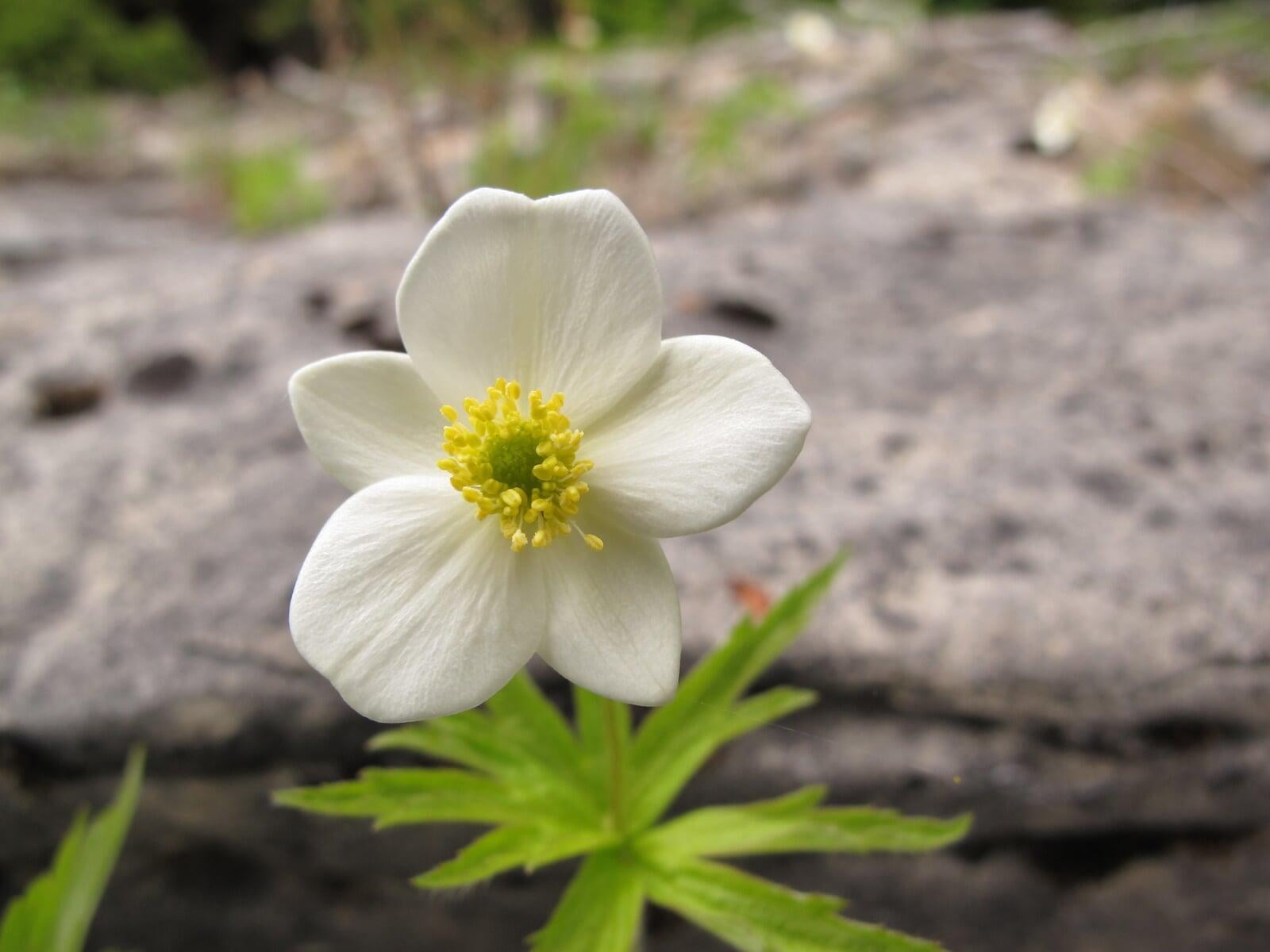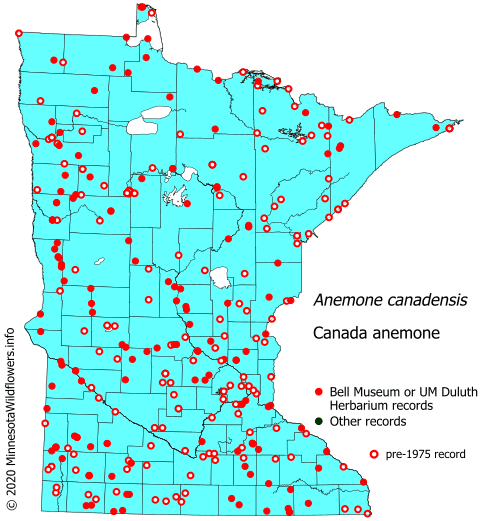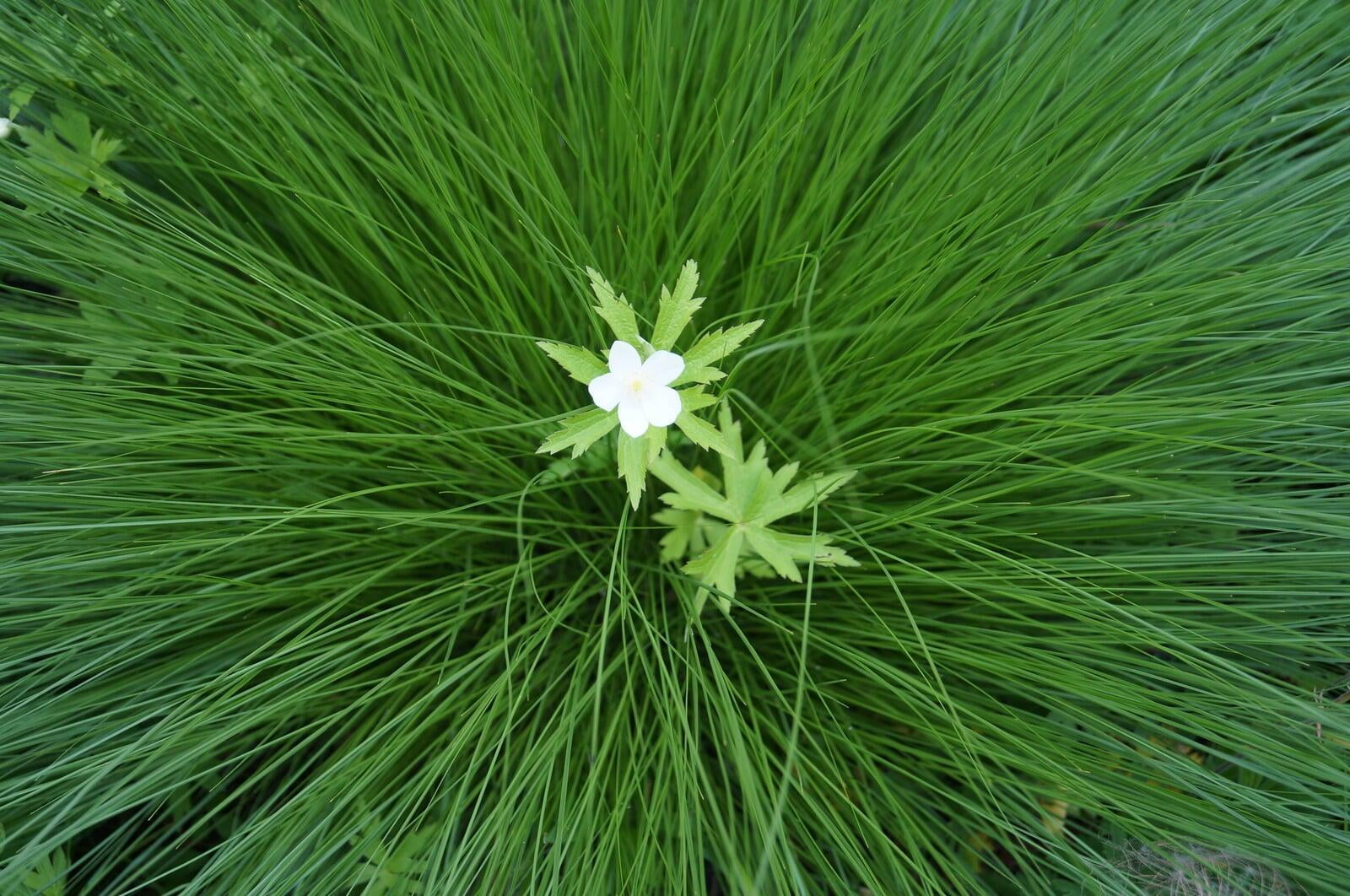Anemone canadensis
Canada Anemone Description:
Anemone canadensis, commonly known as Canada anemone, is a herbaceous perennial plant that belongs to the Ranunculaceae family. It is native to North America and is known for its attractive white flowers that bloom from late spring to early summer. The plant typically grows up to 1-2 feet tall and has a spreading habit. Its leaves are deeply lobed and sharply toothed, giving them a fern-like appearance. Anemone canadensis is a shade-tolerant plant that thrives in moist soil, making it a great addition to natural gardens, wildflower gardens, and other areas with similar growing conditions. It is also a valuable plant for pollinators, particularly bees, making it a great addition to pollinator-friendly gardens. In addition to its ecological benefits, Anemone canadensis is also a medicinal plant and has been used in traditional medicine for its anti-inflammatory properties. With its attractive flowers and unique characteristics, Anemone canadensis is a valuable and versatile plant.
Native Range:
Canada anemone ranges from as far west as Montana, but is more common in the north central united states, such as North Dakota and Minnesota. It is also commonly found in the northeastern states such as Maine.
Standard Plant Information:
Plant Height: 1' - 2'
Bloom Time: May - July
Preferred Habitat: Does well in part shade to full sun in moist fields, shorelines, and woodland thickets.
Sowing:
For most homeowners, the best option is to scatter seed on the ground by hand broadcasting at a minimum of 16-64 pls ounces per acre. For even coverage, we recommend that you broadcast seed in perpendicular rows across the site to ensure even coverage.
You’ll want to broadcast any grass seed first, which will get raked into the soil lightly. Next, it is ideal to mulch the area lightly with either a clean (no seed) straw or preferably with our native Little Bluestem straw, sold at our retail garden centers. After a light mulching is complete, now it’s time to broadcast your native wildflower seeds, which should not be raked into the soil. A good rain or watering is sufficient to cover the seed.
Planting:
Simply dig a hole in the soil slightly larger than the plant’s roots. Ensure that the soil line of the plant is maintained during the transfer (i.e. the plant should be at the same level with the ground as it was in the pot). Pack any loose dirt back around the plant and make sure you water it well the same day to ensure it has the best chance of survival.






